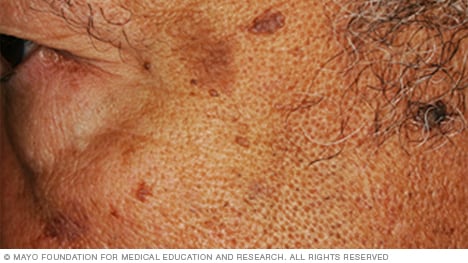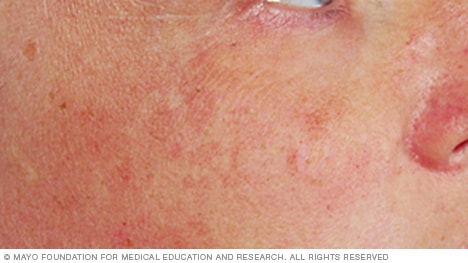Have you noticed dark spots or patches appearing on your skin after spending time in the sun? That uneven tone you’re seeing is your skin’s way of reacting to sun exposure.
When your skin is exposed to harmful UV rays, it produces extra melanin to protect itself. This causes areas of your skin to darken, leading to sunspots, age spots, or hyperpigmentation. If you’ve been wondering why your skin tone looks uneven and how to fix it, you’re in the right place.
Keep reading to discover why this happens, how you can prevent it, and the best treatments to restore your skin’s natural glow. Your journey to even, radiant skin starts here.
Causes Of Uneven Skin Tone After Sun
Uneven skin tone after sun exposure happens because your skin reacts to UV rays. The sun triggers your skin to create more melanin. Melanin is the pigment that gives skin its color. When your skin makes too much melanin, dark patches can form. These patches are often called sunspots or age spots. They appear on parts of your skin that get the most sun. This change in skin color is a type of hyperpigmentation.
Understanding the causes helps to protect and care for your skin better. Here are the main reasons for uneven skin tone after sun exposure.
Melanin Overproduction
Your skin produces melanin to protect itself from UV damage. Too much melanin causes dark spots. This is a natural defense but can cause uneven tone. Sun-exposed areas like the face and arms are most affected.
Sunspots And Age Spots
Sunspots, also called age spots, are small, dark patches. They form after repeated sun exposure. These spots are harmless but change your skin’s appearance. They often look like flat brown or black spots.
Photoaging Effects
Sun exposure speeds up skin aging, called photoaging. It causes wrinkles and rough skin texture. Photoaging also causes uneven pigmentation. The skin loses its smooth, even color over time.
Inflammation And Skin Damage
Sunburn and UV damage cause skin inflammation. This can lead to uneven skin tone. Damaged skin may heal with dark or light patches. Inflammation triggers excess melanin production in some areas.
Signs Of Sun-induced Hyperpigmentation
Sun-induced hyperpigmentation shows itself in several ways. It happens when your skin darkens unevenly after sun exposure. Your body makes extra melanin to shield skin from UV rays. This extra pigment causes patches or spots that look darker than the surrounding skin.
Knowing the signs helps you spot sun damage early. Catching it early can help you care for your skin better. Here are the common signs of sun-induced hyperpigmentation.
Dark Spots On The Skin
Dark spots, often called sunspots or age spots, appear on sun-exposed areas. They are small, flat, and vary in color from light brown to black. These spots show most on the face, hands, and arms.
Uneven Skin Tone
Uneven skin tone means some parts of the skin look darker or lighter. This blotchiness is a clear sign of hyperpigmentation. It makes the skin look patchy instead of smooth and even.
Freckles That Darken
Freckles may become darker or more visible after sun exposure. Unlike new spots, freckles are small and scattered. Their darkening signals your skin is reacting to the sun’s UV rays.
Patchy Discoloration
Patchy discoloration appears as irregular dark areas on the skin. These patches do not have clear edges and can grow over time. This is a common sun damage sign on the face and neck.
Redness And Inflammation
Sun damage may cause redness alongside dark patches. This redness shows skin irritation or inflammation. It often happens soon after sun exposure and can lead to pigmentation later.
Preventing Further Sun Damage
Preventing further sun damage is key to maintaining a healthy and even skin tone. Sun exposure triggers melanin production, which can cause dark spots and uneven pigmentation. Protecting your skin stops this process and helps keep your skin looking smooth and clear.
Consistent protection reduces the risk of new spots forming. It also helps existing spots from getting darker. Simple daily habits can make a big difference in preventing damage caused by UV rays.
Seek Shade During Peak Sun Hours
Sun rays are strongest between 10 a.m. and 4 p.m. Staying in the shade during these hours limits direct UV exposure. This simple step can greatly reduce the chance of skin damage and uneven tone.
Wear Protective Clothing
Covering your skin with hats, long sleeves, and sunglasses blocks harmful rays. Choose tightly woven fabrics for better protection. Clothing acts as a physical barrier that shields your skin from UV light.
Use Broad-spectrum Sunscreen Daily
Apply sunscreen with at least SPF 30 every day, even on cloudy days. Broad-spectrum formulas protect against UVA and UVB rays. Reapply sunscreen every two hours, especially after sweating or swimming.
Avoid Tanning Beds And Prolonged Sunbathing
Tanning beds emit strong UV rays that increase skin damage. Avoiding them lowers the risk of uneven pigmentation and skin aging. Limit time spent sunbathing to protect your skin’s natural tone.

Credit: www.reddit.com
Topical Remedies To Restore Glow
Sun exposure often leaves the skin with uneven tone and dullness. Topical remedies can help restore the natural glow by reducing dark spots and balancing skin color. These treatments work by targeting melanin production and promoting skin repair. Using the right products consistently improves skin clarity and brightness.
Choosing gentle and effective topical solutions supports skin health without causing irritation. Ingredients like antioxidants and lightening agents fade sunspots and soothe damaged skin. Regular use helps even out tone and enhances skin radiance over time.
Vitamin C Serums
Vitamin C is a powerful antioxidant that brightens skin. It reduces melanin production and lightens dark spots. Applying vitamin C serum daily helps fade sun damage and improves skin glow. It also protects skin from free radical damage caused by UV rays.
Niacinamide Creams
Niacinamide, also called vitamin B3, evens skin tone and reduces redness. It blocks excess melanin transfer to skin cells. Using niacinamide cream reduces hyperpigmentation and enhances skin texture. It also strengthens the skin barrier and locks in moisture.
Alpha Hydroxy Acids (ahas)
AHAs gently exfoliate dead skin cells to reveal fresh skin underneath. This process fades dark spots and smooths uneven texture. Regular use of AHA products improves skin brightness and helps maintain an even tone. AHAs also boost collagen production for firmer skin.
Sunscreens With Broad Spectrum Protection
Daily sunscreen use prevents further sun damage and uneven tone. Choose broad spectrum sunscreens that block UVA and UVB rays. Protecting skin stops new dark spots from forming. Sunscreen also supports the healing of existing sun damage.
Retinoids For Skin Renewal
Retinoids speed up skin cell turnover and fade pigmentation. They promote new skin growth and reduce fine lines caused by sun damage. Using retinoid creams or serums helps restore a smooth, even complexion. Start with low concentration to avoid irritation.
Professional Treatments For Sunspots
Professional treatments for sunspots offer effective ways to reduce uneven skin tone caused by sun exposure. These treatments target excess melanin and damaged skin cells. They work deeper than topical creams for noticeable improvements. Consulting a dermatologist helps choose the right method based on skin type and spot severity.
Laser Therapy
Laser therapy uses focused light to break down dark pigment. It targets sunspots without harming surrounding skin. Multiple sessions may be needed for best results. This treatment also stimulates collagen to improve skin texture.
Chemical Peels
Chemical peels remove the outer skin layers with acids. This process fades sunspots by shedding pigmented cells. Peels vary in strength from mild to deep. Recovery time depends on the peel depth and skin sensitivity.
Microneedling
Microneedling creates tiny skin punctures to trigger healing. It helps fade sunspots by promoting new skin growth. This treatment also improves skin firmness and reduces fine lines. Usually, several sessions are required.
Cryotherapy
Cryotherapy freezes sunspots using liquid nitrogen. This destroys excess pigment cells safely. The treated spots peel off after a few days. Cryotherapy works well for small and isolated sunspots.

Credit: www.mayoclinic.org
Tips For Maintaining Even Skin Tone
Maintaining an even skin tone after sun exposure requires consistent care and simple habits. Protecting your skin and using the right products can reduce dark spots and discoloration. Follow these tips to keep your skin looking balanced and healthy.
Use Sunscreen Daily
Apply a broad-spectrum sunscreen with at least SPF 30 every day. Sunscreen blocks harmful UV rays that cause uneven skin tone. Reapply every two hours, especially if you are outdoors.
Wear Protective Clothing
Cover your skin with hats, long sleeves, and sunglasses. These items shield your skin from direct sun exposure. Choose lightweight, breathable fabrics for comfort.
Incorporate Antioxidants In Skincare
Use creams or serums containing Vitamin C or E. Antioxidants help repair skin damage and reduce pigmentation. Apply these products in the morning for best results.
Exfoliate Gently And Regularly
Remove dead skin cells with mild exfoliation once or twice a week. This helps fade dark spots and smooth skin texture. Avoid harsh scrubs that can irritate your skin.
Stay Hydrated
Drink plenty of water daily to keep your skin hydrated. Well-hydrated skin looks healthier and recovers faster from sun damage.
Consult A Dermatologist For Persistent Issues
Seek professional advice if dark spots or uneven tone do not improve. Dermatologists can offer treatments like chemical peels or laser therapy. Early treatment prevents further skin damage.

Credit: www.mayoclinic.org
Frequently Asked Questions
Why Is My Skin Tone Uneven After Sun Exposure?
Uneven skin tone after sun exposure occurs due to excess melanin production. This causes dark spots and hyperpigmentation. Melanin protects skin from UV damage but creates discoloration in exposed areas.
How To Fix Uneven Skin Tone From Sunburn?
Apply sunscreen daily to prevent further damage. Use Vitamin C serums and moisturizers with antioxidants. Exfoliate gently and consider dermatologist treatments like chemical peels or microneedling to reduce dark spots and even skin tone. Stay hydrated and avoid direct sun exposure.
Why Is My Skin Tone Suddenly Uneven?
Uneven skin tone occurs when your skin produces excess melanin to protect against UV damage. This causes dark spots and hyperpigmentation.
How To Fix Blotchy Skin From The Sun?
Use sunscreen daily and avoid direct sun exposure. Apply Vitamin C serums or lightening creams. Consult a dermatologist for treatments like chemical peels or laser therapy to reduce blotchiness and even skin tone.
Conclusion
Uneven skin tone after sun exposure is common and affects many people. Your skin makes more melanin to protect itself from UV rays. This causes dark spots and uneven patches. Protect your skin by wearing hats, sunglasses, and sunscreen daily.
Using creams with Vitamin C can help lighten dark areas. For stubborn spots, professional treatments like laser or microneedling work well. Always talk to a dermatologist before starting any treatment. Taking simple steps can keep your skin healthy and glowing after sun exposure.
 Skip to content
Skip to content